We spend time in it every day of the week. Sitting on the holy seat, wading in the bathtub, washing our hands, faces-the bathroom gets some of the highest traffic compared to other rooms. This means it also makes up a high percentage of the utility bills. So shouldn’t it be your first priority when it comes to energy efficiency?
Where do you start? What needs the most attention? It can be a pickle, and the costs can sound extravagant if you choose the big projects. So break it down into smaller ones that won’t break the bank. Consider some of these inexpensive options that significantly increase efficiency:
Low-Flow Shower Heads and Faucets-Low-flow shower heads and faucets can decrease home water usage by 60 percent. Additionally, using less water will help the environment and decrease water and gas bills. This doesn’t mean you lose water pressure either. There are plenty of low-flow options that still have rapid water flow.
Low-Flush Toilets-Every time you flush your toilet, it drains a lot of water-almost 28 gallons for every person per day. In comparison, a low-flow toilet uses two to five times less water. Homeowners will save anywhere from $90 to $100 per year on their water bill. How is that not a good deal for your home and the environment?
On-Demand Hot Water Circulation Pump-A regular hot water heater usually has too much or too little hot water saved up, which increases your natural gas bill and potentially your water bill. Comparatively, an on-demand hot water circulation pump sends hot water to the tub or sinks in seconds. That way you don’t lose heat in unused water, and you won’t have water streaming through the faucet while you wait for it to get hot.
Avoid low- or no-VOC paints. Many paints are usually imbued with volatile organic compounds (VOCs), which can give off harmful emissions. This isn’t safe, especially not for children with developing lungs. Instead, low- or no-VOC paints will keep indoor air quality healthy for everyone in the home. It might be a bit more expensive, but it’s worth the investment.
No fiberboard and particleboard countertops and cabinets. Fiberboard and particleboard are sometimes used in cabinets and countertops. However, these materials use formaldehyde in their sealers, which is a well-known carcinogen that gives off harmful emissions. If any of yours are made from these materials, you need to seal them with low-or no-VOC sealers or replace them.
Andrea Davis is the editor for HomeAdvisor, which helps homeowners find home improvement professionals in their area at no charge to ensure the best service in the shortest amount of time.
If you are looking for HVAC and plumbing services experts visit Eco Plumbers, Electricians, and HVAC Technicians.












